Perhaps it’s no coincidence that the narrative films that were the most consistently well-made at the Tribeca Film Festival already arrived with distribution and will be in theaters soon. All have a built-in adult appeal, and what they may lack in hipness, they make up in assured storytelling. After seeing the following four films in particular, one would hope that they are harbingers for what the rest of the year may hold: complex, starring roles for actresses over 40. (And it’s not even the fall awards season yet.)
One of the most engaging films at this year’s festival was Eleanor Coppola’s sly travel romance Paris Can Wait (which doubles as hardcore travel porn). The story saunters through France, from Cannes and Provence (where the lavender is in bloom), to a pit stop in Lyon, and onward to Paris. Granted, the storyline doesn’t break or even crack the proverbial mold, and all of the characters wear their psychology as accessories (Anne is suffering from empty nest syndrome). It also obviously recalls star Diane Lane’s previous getting-her-groove-back vehicle, 2003’s Under the Tuscan Sun.
Lane plays Anne, who is married to Michael, an international hotshot producer played by Alec Baldwin, and who accepts an offer from Michael’s French colleague, Jacques (Arnaud Viard), for a road trip from the Riviera to the City of Lights, where she’s supposed to meet up with hubby. What the film is really about is the art of seduction, equally of Anne and the audience as Jacques makes unscheduled stops to take in the Roman-built Pont du Gard or one of the country’s best restaurants, stretching the daytrip to two days. Thus the film settles into a lazy, free-flowing rhythm, set to a jaunty A Man and a Woman–esque soundtrack. Like the patient Jacques, the movie takes its time and gradually becomes vibrant, as does Anne’s wardrobe, which changes from beige casualwear to a blood-red evening ensemble.
The performances, particularly Viard as the most enthusiastic tour guide possible, are subtle and charming, without thrusting a feel-good itinerary upon the audience. Without a doubt, the script offers Lane her most well-rounded role since Unfaithful. In many ways, the casting of Baldwin as the spouse—barking out orders into his cell phone—makes Anne’s should-I-or-shouldn’t-I choice easier. Baldwin only needs to appear onscreen briefly for viewers to sense self-involvement. Now that the actor has played Donald Trump for the past season of Saturday Night Live, his presence may bring up other feelings as well. (Paris Can Wait will be released on May 12.)
Writer/director Azazel Jacobs’s The Lovers answers the laments heard in Rosanna Arquette’s 2002 documentary Searching for Debra Winger, which bemoaned the lack of opportunities for actresses, by bringing Winger back to the big screen. She’s hardly been missing in action; she’s the matriarch in Netflix’s middling red-state family sitcom The Ranch, but she and Tracy Letts are undisputedly the stars of Jacobs’s very controlled, very precise chamber piece comedy of love, adultery, and a pragmatic marriage.
The drollery takes a good half-hour to pick up steam, as the script follows a rigidly symmetrical pattern: Mary (Winger) promises her slightly younger lover (Aidan Gillen) that she will leave her husband, but only after her adult son has come and gone for a family visit. Likewise, Michael (Letts) assures his livewire girlfriend (Melora Walters) that he will finally call it quits with Mary.
There are plenty of pauses written into the script that would outdo any Harold Pinter play. It’s during these moments that the film loosens up and drops the bath towel, so to speak, and becomes frisky and nimble. Like in a well-constructed farce, Jacobs lays down the groundwork in the first half for the implosions during the rest, and the married couple careens out of what at first feels like a circumscribed setup. If it wasn’t set in anywhere-suburban Southern California, you would have sworn this was a French film by Patrice Leconte. In fact, Mary and Michael often self-medicate through (presumably) French red wine. Viewers can follow along, partaking in a drinking game, taking a sip for every half-baked, thoroughly unconvincing lie Mary or Michael utter. Prepare to get soused. (It opens May 5.)
Another film, Oren Moverman’s The Dinner, gets off to a rocky start. Based on Dutch writer Herman Koch’s 2009 novel, two couples confer in a most public arena, an ultra-posh restaurant, to hash out a sensitive and reputation-destroying family matter: Congressman Stan Lohman (Richard Gere), eyeing the governorship, and his sleek, leopardine wife, Katelyn (Rebecca Hall); and Lohman’s ex-teacher/now unemployed brother Paul (Steve Coogan) and wife Claire (Laura Linney, back as a lead after a spell of supporting roles).
The shifts in tone deliberately jar the viewer, with flashbacks to a brutal act of violence contrasting with the formal, ornate restaurant and obsequious service. However, many sequences go on far too long, and one would assume that the film is really centered on the overwritten role of Paul, who becomes more addled than usual now that he’s off his meds; the other characters disappear temporarily in the middle of the film.
Additionally, The Dinner is a variation on a theme shared by so many other films. It’s a skimpy meal compared to, say, Michael Haneke’s slow-burning Cache (Hidden), in which the parents also take on the sins of the child. (Race and class issues feature in both.) It’s only during the last 40 minutes that the gloves come off and the foursome gets down to the nitty-gritty, at which point Linney and Hall grab hold of the focus. Finally, all of the prior exposition matters, and one can see why Cate Blanchett was once slated to direct this movie, an actors’ showcase. (Opening on May 5.)
Speaking of Blanchett, no other work offered an actor as much range as writer/director Julian Rosefeldt’s affected art theory rant Manifesto, based on his multimedia installation that exhibited at New York’s Park Avenue Armory last year. It’s a 94-minute rambling rap session on art theory, as though Rosefeldt had tossed dozens of 20th-century art movements into a blender.
None of the ideas presented will shatter viewers’ worldviews: all current art is fake; nothing is original; “art requires truth, not sincerity” (according to painter Kazimir Malevich). As a result, the eye-catching art direction overwhelms the verbal bombardment. Less run-of-the-mill are the dozen portraits of Blanchett, which range from a Southern 1950s homemaker to a Russian choreographer to a blonde anchorwoman, each portrayal an embodiment of an artistic manifesto. It’s virtually a one-woman show. (What’s next, a remake of Sybil?)
Blanchett rarely has an opportunity to be this funny on screen—she’s not Cinderella campy but sardonic and droll. She completely submerges herself in several of the roles, especially as a bearded homeless man, though her Southern accent wavers and she’s doesn’t quite cut loose as a tatted, punk barfly. The film reveals her chameleon-like strengths and blind spots, but is still a must-see for Blanchett die-hard fans, though the nonstop lecture will exclude others. (It will open on May 10.)

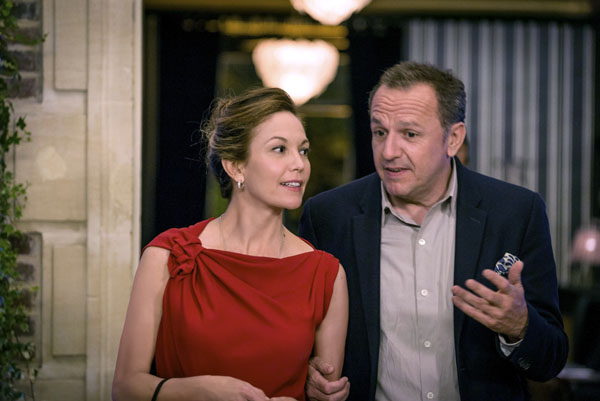
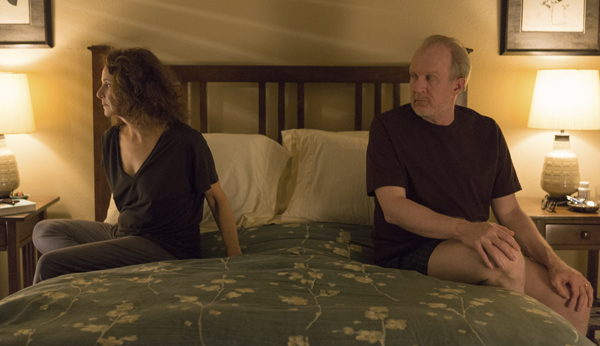
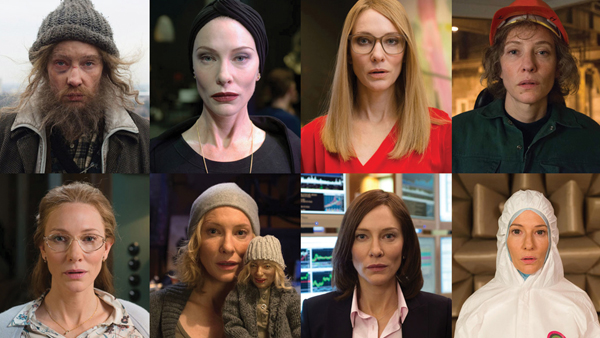

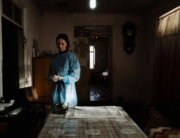
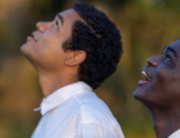

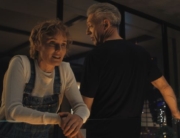
Leave A Comment